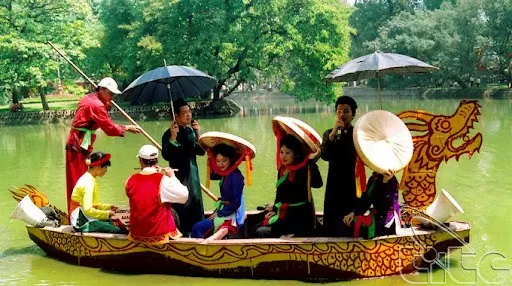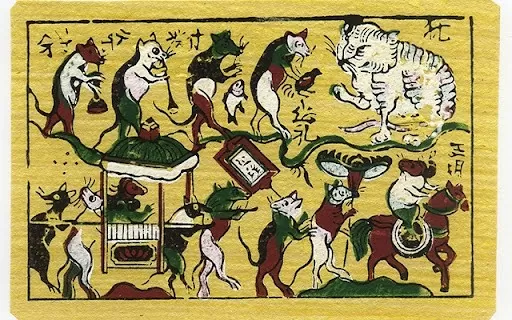
Bac Ninh - Kinh Bac: Treasure trove of ancient and religious landmarks
Latest
 |
| A corner of Bac Ninh City. (Source: laodong.com.vn) |
Located in the Red River Delta, Bac Ninh is home to more than 1.3 million people and covers an area of around 822 square kilometres. Economic potential shines brightly in Bac Ninh, with impressive GDP growth driven by robust industrial and technological sectors.
According to current prices, Bac Ninh's GDP is estimated to be 220,223 billion VND in 2023, ranking it ninth in the whole country and fourth in the Red River Delta. Many multinational corporations, such as Samsung, Canon, and Amkor, have established major manufacturing plants here, significantly contributing to the province's GDP. Industrial parks, like Yen Phong and Que Vo, bustle with activity, showcasing the region's economic vitality. These parks provide jobs for thousands of localities and attract a skilled workforce nationwide, further boosting the local economy.
History and religion intertwine
Steeped in history, Bac Ninh stands as a treasure trove of ancient and religious landmarks. The province is famously known for its ancient pagodas and temples, such as the Dau Pagoda, which dates back to the 2nd century, making it the oldest pagoda of Vietnam. The history of our nation's progress is intimately associated with the creation and maintenance of Dau Pagoda. Together with several neighbouring pagodas, Dau Pagoda creates the largest Buddhist centre in Vietnam and the region.
Do Temple, located in Dinh Bang Ward, Tu Son City, honours the 214 years that eight monarchs of the Ly Dynasty ruled there. In addition to having architectural worth, Do Temple's distinctive architecture also carries deep historical and cultural significance related to the Ly dynasty and the history of the country as a whole. After a long period of war and devastation, the temple has been repaired and expanded but still maintains its original shape and architecture.
Cultural highlights and festivals
Quan Ho folk song, recognized by UNESCO as an Intangible Cultural Heritage, features prominently in Bac Ninh's cultural tapestry. These melodic duets, traditionally performed in village courtyards and communal houses, reflect deep cultural roots. Quan Ho folk songs are frequently sung at the start of the new year, at festivals, or when a large group of friends gathers.
 |
| Quan Ho singing on the boat (Source: Vietnam National Tourism Administration) |
Situated along the banks of the Duong River in Thuan Thanh district, Dong Ho folk painting village holds a special place in the spiritual life of the Vietnamese people with its paintings rich in national identity. These paintings, not drawn based on inspiration but printed on board, showcase a meticulous process. Achieving sophisticated engravings requires a modeller with high technical qualifications. The paper used for printing, known as do paper, features a scallop background. Iridescent scallops taken from seashells and mussels create a unique material, giving the paintings their distinct texture. Once printed, the shapes blend together in natural harmony, resulting in artwork that captures the essence of Vietnamese culture.
 |
| Dong Ho folk painting "Mouse's Wedding" is famous not only for its composition and colour but also for its philosophical content about humanity and satire about the injustice between the working people and the bureaucrats. (Source: Bac Ninh Portal) |
When discussing Bac Ninh, the Lim Festival inevitably comes to mind. This event transcends a mere festival, encapsulating the quintessence of Kinh Bac through Quan Ho folk songs. Held from the 13th to the 15th of the first lunar month, the Lim Festival showcases a vibrant blend of traditional ceremonies and folk culture. Highlights include Quan Ho singing competitions and an array of traditional games, offering a deep dive into the region's cultural heritage.
Regional cuisine
Banh Phu The is a characteristic of Bac Ninh culture. Wrapped in dong leaves and then boiled, the cakes don’t immediately reveal their aroma. However, beneath the transparent yellow crust, the inviting filling becomes visible. The filling includes steamed and beaten green beans, white sugar, coconut flesh, lotus seeds, and a hint of five-spice flavour. When tasting the cake, the elasticity of sticky rice, the creaminess of green beans, the rich taste of coconut flesh, and the sweetness of sugar blend together, creating a memorable flavour.
In addition, you should not miss Banh Khuc in Diem village. During holidays, festivals, and on the full moon or first days, villagers make new Banh Khuc to invite relatives and guests. The process of making this cake does not take much time. Combining typical local ingredients, Banh Khuc offers a unique flavour that stands out. While many other cakes can quickly lead to a sense of fullness or boredom after just one or two, Diem village’s Banh Khuc keeps people craving more, even after eating four or five.
With its rich cultural heritage, historical significance, and natural beauty, Bac Ninh offers a compelling destination for tourists seeking an authentic Vietnamese experience. Exploring ancient temples, enjoying traditional folk music, or savouring local delicacies, visitors would find Bac Ninh enchanting at every turn.













